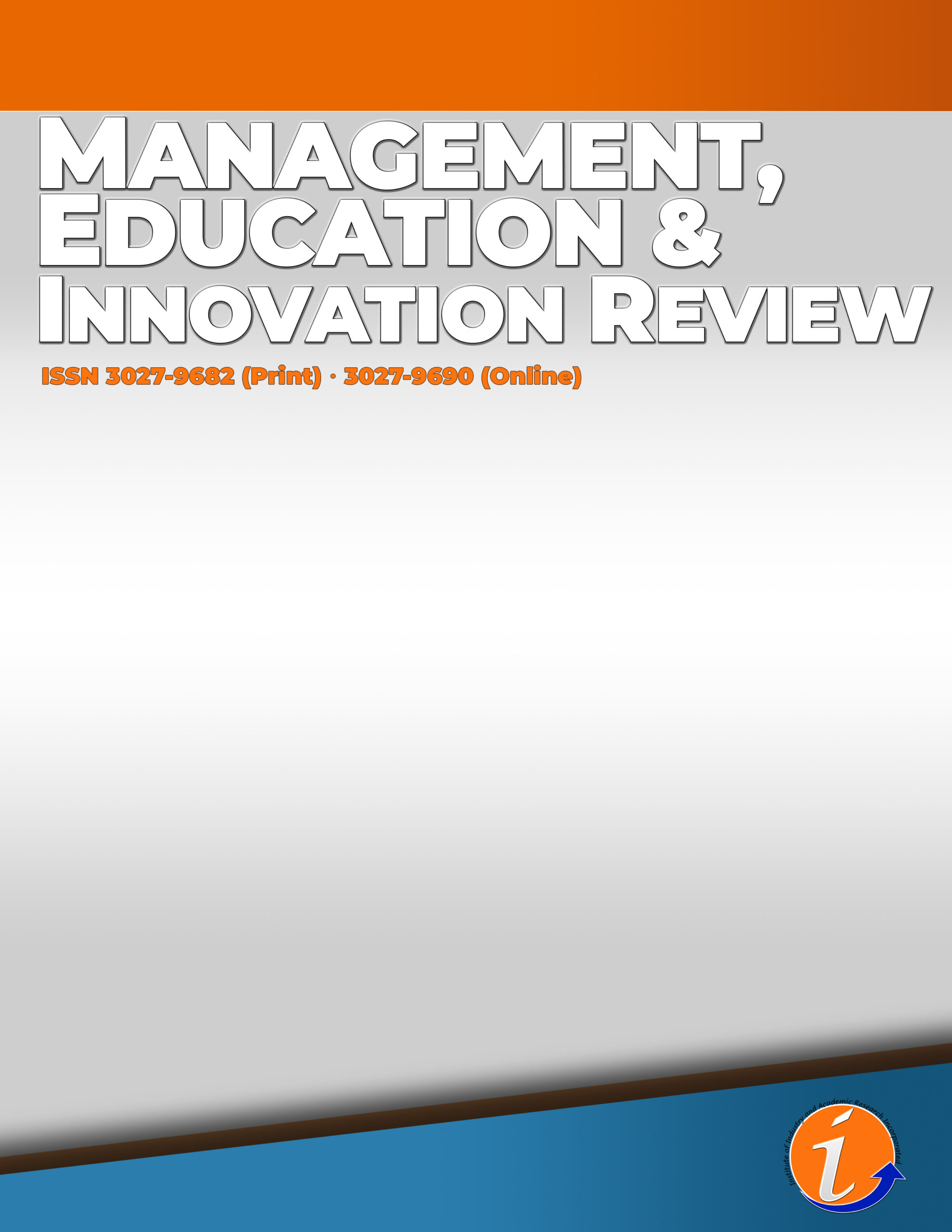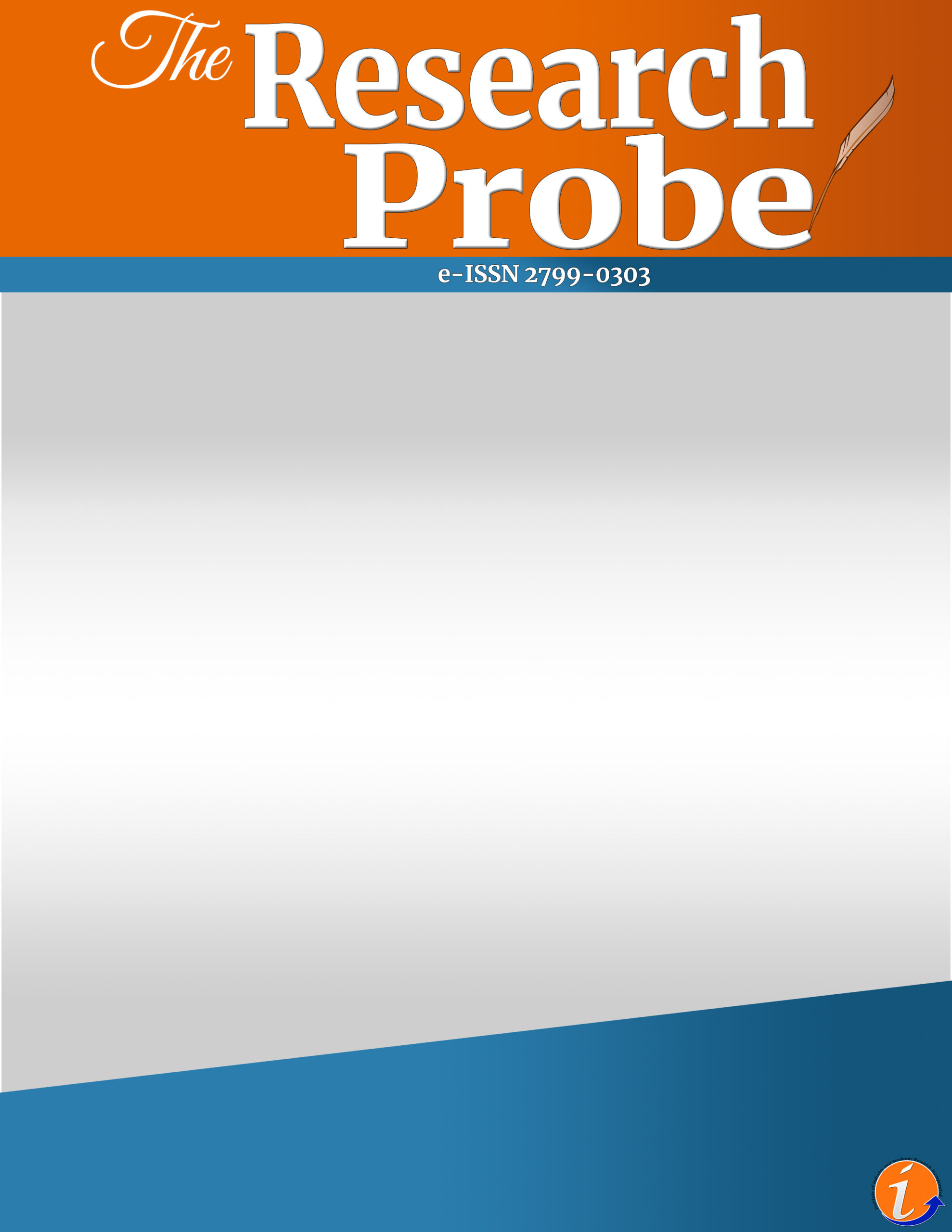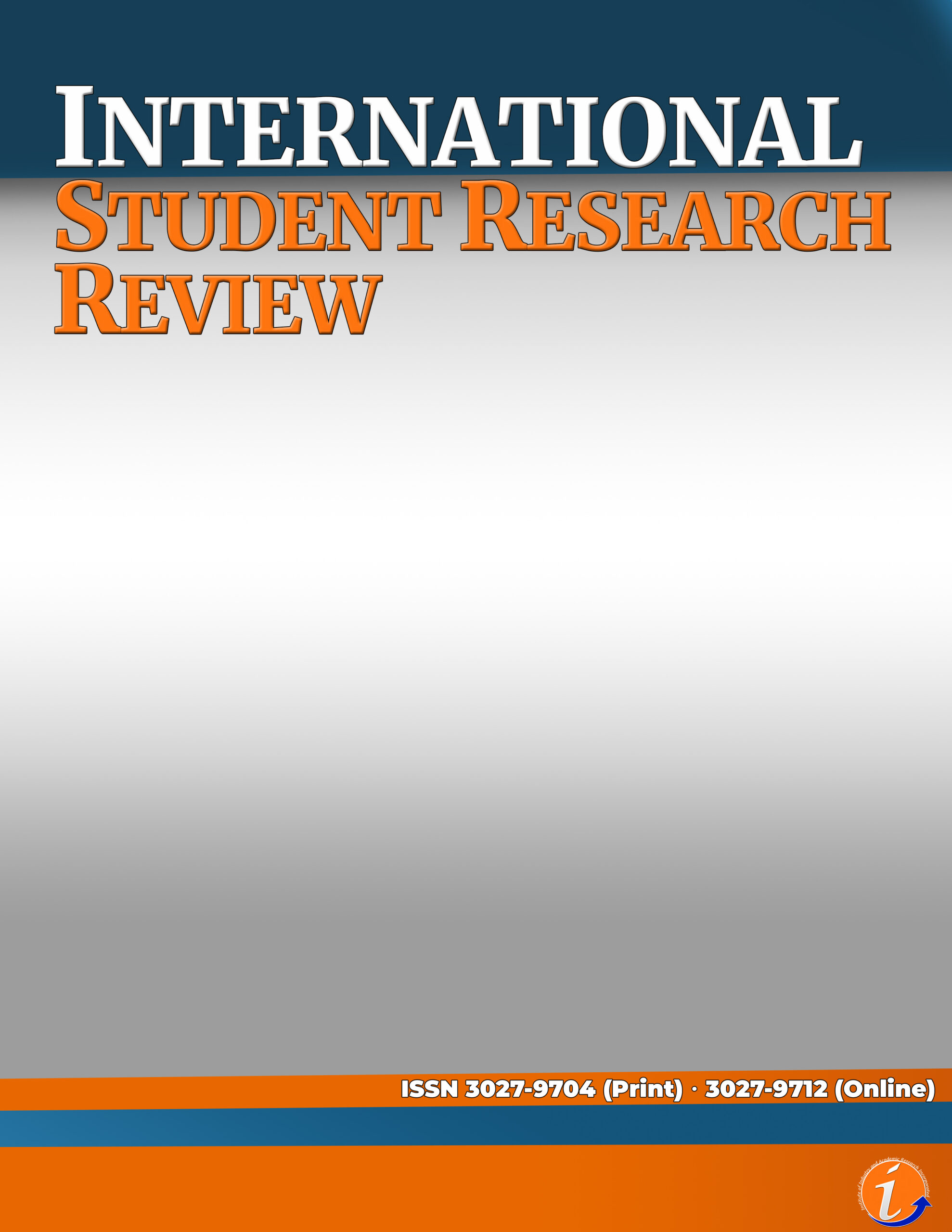Abstract
The world is competitive in every possible way, especially in the education sector, so university students tend to seek success in their academic field and try to get attention in their social circle regardless of any cost or effort involved. Consequently, this leads to the presence of narcissistic personalities among the university population. This study aimed to investigate the mediating role of narcissism in the relationship between self-esteem and aggression among university students in Sagaing. The sample comprised 1058 undergraduate students, 519 females and 539 males from undergraduate classes. Rosenberg (1965) self-esteem scale, the Narcissistic Personality Inventory by Raskin and Terry (1988) and the aggression questionnaire by Buss and Warren (2000) were used. The results of the mediation analysis revealed that self-esteem has a direct negative effect on aggression and also an indirect positive effect on aggression through the mediation effect of narcissism. This clearly indicates the suppressor effect, competitive mediation, since the positive relationship between self-esteem and aggression is reversed when narcissism is mediated as a suppressor variable. As this suppressor effect is enticing for the researchers in the academic field of psychology, further studies should explore the moderating factors in the relationship between self-esteem, narcissism and aggression. It is anticipated that the current study will provide the basic information that can contribute to the development of a prevention program for narcissism and aggression in the higher education sectors with a strong emphasis on the self-esteem of university students.
Keywords: self-esteem, narcissism, aggression, university students
References
Ahsan (2015). Physical, verbal, anger and hostility aggressiveness in university’s physical education students. International Journal of Sports and Physical Education, 1(2).
American Psychiatric Association (1980). Diagnostic and statistical manual of mental disorders (3rd Ed.). Washington, DC.
American Psychiatric Association (2000). Diagnostic and statistical manual of mental disorders (4th ed., text rev.). Washington, DC.
American Psychiatric Association (2013). Diagnostic and statistical manual of mental disorders (5th ed., text rev.). Washington, DC.
Anwar. M., Mahmood B. & Hanif M. K. (2016). Mental health issues in young adults of Pakistan: The relationship of narcissism and self -esteem with aggression. Journal of Behavioral Sciences, 26 (2).
Bandura, A. (1973). Aggression: A social learning analysis. Prentice-Hall.
Barry, C. T., Doucette, H., Loflin, D. C., Rivera-Hudson, N., & Herrington, L. L. (2017). Let me take a selfie: Associations between self-photography, narcissism, and self-esteem. Psychology of Popular Media Culture, 6(1), 48–60. https://doi.org/10.1037/ppm0000089
Baumeister, R. F., Bushman, B. J., & Campbell, W. K. (2000). Self-esteem, narcissism, and aggression: Does violence result from low self-esteem or from threatened egotism? Current Directions in Psychological Science, 9(1), 26–29. https://doi.org/10.1111/1467-8721.00053
Baumeister, R. F., Campbell, J. D., Krueger, J. I. & Vohs, K. D. (2003). Does high self-esteem cause better performance, interpersonal success, happiness, or healthier lifestyles? Psychological Science in the Public Interest, 4(1).
Baumeister, R. F., Smart, L. & Boden, J. M. (1996). Relation of threatened egotism to violence and aggression: the dark side of high self-esteem. Psychological Review, 103(1).
Bushman, B. J. & Baumeister, R. F. (1998). Threatened egotism, narcissism, self-esteem, and direct and displaced aggression: Does self-love or self-hate lead to violence? Journal of Personality and Social Psychology, 75(1).
Bushman, B. J., Baumeister, R. F., Thomaes, S., Ryu, E., Begeer, S. & West, S. G. (2009). Looking again, and harder, for a link between low self-esteem and aggression. Journal of Personality, 77(2).
Buss, A. H. & Perry, M. (1992). The Aggression Questionnaire. Journal of Personality and Social Psychology, 63(3). https://doi.org/10.1037/0022-3514.63.3.452.
Buss, A. H. & Warren. W. L. (2000). The Aggression Questionnaire: Manual. Western Psychological Services.
Buss, A. H. (1961). The Psychology of Aggression. New York: Wiley.
Buss, A. H. (1963). Physical aggression in relation to different frustrations. Journal of Abnormal and Social Psychology, 67(1).
Cailhol L, Pelletier É, Rochette L, Laporte L, David P, Villeneuve É, Paris J, Lesage A (2017). Prevalence, Mortality, and Health Care Use among Patients with Cluster B Personality Disorders Clinically Diagnosed in Quebec: A Provincial Cohort Study, 2011-2012. Can J Psychiatry. 62(5): 336-342. https://doi.org/10.1177/0706743717700818.
Cain, N. M., Pincus, A. L. & Ansell, E. B. (2008). Narcissism at the crossroads: Phenotypic description of pathological narcissism across clinical theory, social/personality psychology, and psychiatric diagnosis. Clinical Psychology Review, 28.
Campbell, W. K., Rudich, E. A. & Sedikides, C. (2002). Narcissism, self-esteem, and the positivity of self- views: Two portraits of self-love. Personality and Social Psychology Bulletin, 28.
Cooper, C. L. (1981). Social Support at Work and Stress Management. Small Group Behaviour, 12 (3).
Donnellan, M., Trzesniewski, K., Richard, R., Terrie, M. & Avshalom, C. (2005). Low Self-Esteem Is Related to Aggression, Antisocial Behavior, and Delinquency. Psychological science, (16).
Epstein, S. (1990). Cognitive-experiential self-theory. New York: Guilford Press.
Freud, S. (1914). On narcissism: An introduction. Yale University Press, New Haven.
Freud, S. (1931). Libidinal Types, In J. Strachey (Ed.) Collected Papers, 5, Chapter XXIII. Hogarth Press Ltd: London.
Hook, T. (2007). The role of self-concept and narcissism in aggression.
https://gs.statcounter.com/social-media-stats/all/myanmar/2019
Hyatt, C. S., Sleep, C. E., Sedikides, C., Campbell, W. K., & Miller, J. D. (2017). Narcissism and explicit self-esteem: A nomological network analysis. Manuscript under Review.
Kernberg, O. F. (1970). Factors in the psychoanalytic treatment of narcissistic personalities. Journal of the American Psychoanalytic Association, 18.
Kernberg, O. F. (1975). Borderline conditions and pathological narcissism. New York: Jason & Aronson.
Kernberg, O. F. (1976). Object relations theory and clinical psychoanalysis. New York: Jason & Aronson.
Kernis, M. H., Cornell, D. P., Sun, C.-r., Berry, A. & Harlow, T. (1993). There’s more to self-esteem than whether it is high or low: The importance of stability of self-esteem. Journal of Personality and Social Psychology, 65(6).
Kernis, M. H., Grannemann, B. D. & Barclay, L. C. (1989). Stability and level of self-esteem as predictors of anger arousal and hostility. Journal of Personality and Social Psychology, 56(6).
Kohut. H (1972). Thoughts on Narcissism and Narcissistic Rage, The Psychoanalytic Study of the Child, 27 (1), 360-400. https://doi.org/10.1080/00797308.1972.11822721
Locke, K. D. (2008). Aggression, narcissism, self-esteem, and the attribution of desirable and humanistic traits to self-versus others. Journal of Research in Personality, 43.
Locke, K.D. (2009). Aggression, narcissism, self-esteem, and the attribution of desirable and humanizing traits to self-versus others, 43 (1) 99-102. https://doi.org/10.1016/j.jrp.2008.10.00
May, M. T. K. (2019). A Study on the Effects of Smartphone Usage on Students (Case Study: Yangon University of Economics). Yangon University of Economics Master of Public Administration Programme.
Miller, J. D. & Campbell, W. K. (2008). Comparing clinical and social-personality conceptualizations of narcissism. Journal of Personality, 76(3).
Morf, C. C. & Rhodewalt, F. (2001). Unraveling the paradoxes of narcissism: A dynamic self- regulatory processing model. Psychological Inquiry, 12.
Ostrowsky, M. K. (2010). Are violent people more likely to have low self-esteem or high self-esteem? Aggression and Violent Behavior, 15(1).
Pincus, A. L. & Lukowitsky, M. R. (2010). Pathological narcissism and narcissistic personality disorder. Annual Review of Clinical Psychology, 6.
Raskin, R. & Terry, H. (1988). A principal-components analysis of the Narcissistic Personality Inventory and further evidence of its construct validation. Journal of Personality and Social Psychology, 54.
Raskin, R., Novacek, J. & Hogan, R. (1991). Narcissistic self-esteem management. Journal of Personality and Social Psychology, 60.
Rasmussen, K. (2015). Entitled vengeance: A meta-analysis relating narcissism to provoked aggression. Aggressive Behaviour. 42 (4) 362-379. https://doi.org/10.1002/ab.21632
Rhodewalt, E. & Morf, C. C. (1995). Self and interpersonal correlates of the Narcissistic Personality Inventory: A review and new findings. Journal of Research in Personality, 29.
Richardson, D. & Brown, L. (2003). Defining direct and indirect aggression: The Richardson Conflict Response Questionnaire. International Review of Social Psychology, 16.
Rosenberg, M. (1965). Society and the adolescent self-image. Princeton, NJ: Princeton University Press.
Sedikides, C., Rudich, E. A., Gregg, A. P., Kumashiro, M. & Rusbult, C. (2004). Are normal narcissists psychologically healthy? Self-esteem matters. Journal of Personality and Social Psychology, 87(3)
Stinson, F., Dawson, D., Goldstein, R., Chou, S., Huang, B., Smith, S., Ruan, W., Pulay, A., Saha, T., Pickering, R. & Grant, B. (2008). Prevalence, correlates, disability, and comorbidity of DSM-IV narcissistic personality disorder: Results from the wave 2 national epidemiologic survey on alcohol and related conditions. The Journal of clinical psychiatry, 69.
Stucke, T. S. (2003). Who’s to blame? Narcissism and self-serving attributions following feedback. European Journal of Personality, 17(6), 465–478. https://doi.org/10.1002/per.497
Trzesniewski, K., Donnellan, M., Moffitt, T., Richard, R. & Avshalom, C. (2006). Low self-esteem during adolescence predicts poor health, criminal behavior, and limited economic prospects during adulthood. Developmental psychology, 42.
Twenge, J. M & Campbell, W. K. (2008). Increases in positive self-views among high school students. Birth-cohort changes in anticipated performance, self- satisfaction, self-liking, and self-competence. Psychological Science, 19 (11).
Twenge, J. M. & Campbell, W. K. (2003). Isn’t it fun to get the respect that we’re going to deserve? Narcissism, social rejection, and aggression. Personality & Social Psychology Bulletin, 29(2).
Twenge, J. M. & Foster, J. D. (2010). Birth cohort increases in narcissistic personality traits among American college students, 1982-2009. Social Psychological and Personality Science, 1(1).
Twenge, J., Konrath, S., Foster, J., Campbell, W. K. & Bushman, B. (2008). Egos Inflating Over Time: A Cross-Temporal Meta-Analysis of the Narcissistic Personality Inventory. Journal of personality, 76.
Wiersbe, W. W. (2007). The Wiersbe Bible Commentary: Old Testament, 2nd ed. David C. C., Italy.
Wink, P. (1991). Two faces of narcissism. Journal of Personal Social Psychology, 61.
World Health Organization (WHO). (2002). The world health report 2002 – Reducing risks, promoting healthy life. Geneva, Switzerland.













